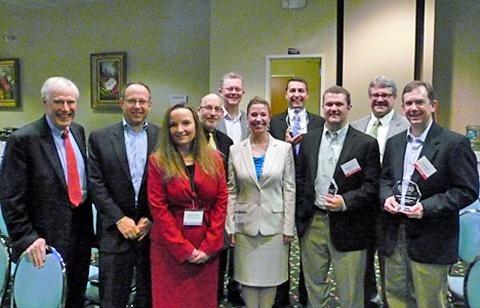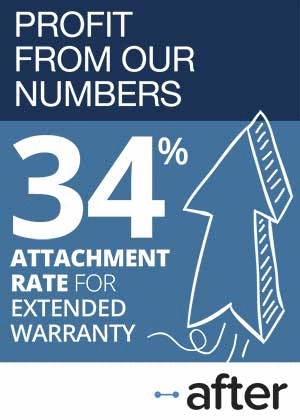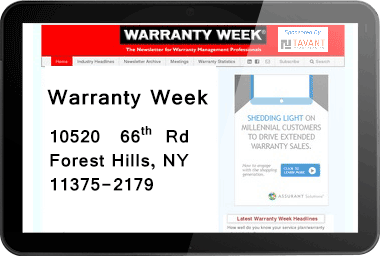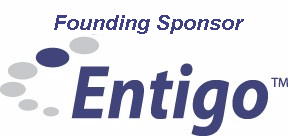Top 100 Warranty Providers of 2011:
While most of the largest manufacturers continued to reduce their warranty costs last year, some saw dramatic rises. Here are the top percentage increases and decreases of the year for claims, accruals, and reserves.
In what amounts to the first installment of a detailed look at nine years of product warranty spending levels by American manufacturers, we're comparing a hundred of the largest warranty providers to themselves a year ago, then comparing the changes to each other.
There's plenty of good news in the brand new 2011 data, with most of the largest warranty providers managing to reduce their warranty costs as a percentage of sales. It's very important to phrase it that way, because warranty costs in absolute dollar terms actually went up last year. But sales went up faster, so the percentages spent on warranty fell to the lowest levels ever recorded.
It sounds like a contradiction. But it's actually incredibly great news. According to our latest figures, U.S.-based manufacturers spent $24.7 billion on claims last year, up from $23.6 billion in 2010. Those same manufacturers set aside $24.7 billion in warranty accruals, up from $22.9 billion in 2010.
As a percentage of sales, however, the claims rate continues to fall, dropping from 1.45% at the end of 2010 to 1.39% at the end of 2011. The accrual rate, however, grew ever so slightly, from 1.38% at the end of 2010 to 1.40% at the end of 2011. But in between those two year-end points, the accrual rate actually dipped to a new low of 1.29% at the end of June 2011.
Growing Reserves
Collectively, U.S.-based manufacturers held $36.6 billion in their warranty reserve funds at the end of 2011, up from $33.8 billion at the end of 2010. But let's stop there with the industry-wide statistics, because we're still waiting for a handful of mid-sized manufacturers to file their annual reports.
So let's restrict ourselves for the rest of this week's newsletter to a discussion of just the top 100 largest U.S.-based warranty providers, as measured by the dollar amount of claims reported as paid during 2011. All but one of the largest manufacturers have already filed their Form 10-K annual reports with the U.S. Securities and Exchange Commission.
The largest warranty providers that have not yet filed are Nortek Inc., Associated Materials LLC, and Ply Gem Holdings Inc. Only Nortek stands a chance of making the top 100, and only if it reports $4.3 million or more in claims paid during the fourth quarter. So while we wait, let's assume that Tyco International Ltd., with its $24 million claims total for 2011, is warranty provider number 100 on our list.
What we want to do this week is compare the top 100 to each other. But we can't compare them directly, at least not in terms of percentages. Each company and each industry has its own way of counting warranty cost. So my 5% claims rate may not mean the same thing as your 5%. I might be counting all my call center costs as warranty, and you might be tabulating all your parts cost at wholesale prices. I might count product recalls together with warranty while you may not.
Making Comparisons
So let's compare each company to itself. Let's measure each company in terms of claims, accruals, sales, and warranty reserves at the end of 2011, and compare those metrics to the same numbers at the end of 2010. Then we'll compare the changes, looking for the biggest increases and decreases.
The idea is that in a pool of the largest manufacturers, the companies whose warranty metrics change the most over the course of a year have something to celebrate (or regret). Things tend to change slowly at large companies, so when we see a claims rate halve or double over the course of a year, that implies something significant is also changing in the product line in terms of reliability, quality, or frequency of repair.
But that's not always the case. For instance, in Figure 1 we've listed the ten largest accrual amounts reported for the fourth calendar quarter of 2011. These are the fiscal quarters that ended during the months of October, November, or December, so they mean different things to different companies. For instance, for Apple Inc., those months were the company's first fiscal quarter of a year that ends this September. For Hewlett-Packard Co., it was the final quarter of a fiscal year that ended Oct. 31, 2011.
The reason we're explaining all this minutia is because two very big warranty news items are encapsulated in Figure 1. First, Apple is now the largest warranty provider of all, as measured by its quarterly accruals. For the first time ever, it accrued more than GM, Ford or HP in a single quarter. But then again, its iPad, iPod and iPhone sales are soaring, so this is to be expected. No wonder its stock passed $600 per share earlier today.
Including Recalls?
Second, Ford is now counting both warranty and recalls in a single bucket. GM has always counted this way, so now the two companies are more directly comparable. But because Ford's change in methodology was announced in the annual report, we're accounting for it as if all the recall accruals suddenly appeared in the fourth quarter.
On that basis, which we know we'll have to correct as 2012 wears on and Ford provides us current and year-ago data for March, June and September, Ford has temporarily bumped GM into third. We'll explain this more thoroughly in a few weeks when we take a deeper dive into the automotive industry's warranty numbers.
Figure 1
Top 100 U.S.-based Warranty Providers:
Top Ten Accruals Amounts Reported,
4th Calendar Quarter 2011 vs. 2010
(accruals in $ millions)
| Accruals | Accruals | Amount | |
| Made | Made | vs. | |
| Company | 4Q '10 | 4Q '11 | Year Ago |
| Apple Inc. | $396 | $837 | +111% |
| Ford Motor Co. | $638 | $831 | +30% |
| General Motors | $892 | $772 | -13% |
| Hewlett-Packard | $646 | $691 | +7.0% |
| Caterpillar Inc. | $268 | $266 | -0.7% |
| General Electric | $146 | $234 | +60% |
| Dell Inc. | $260 | $223 | -14% |
| Deere & Co. | $154 | $163 | +5.8% |
| Cisco Systems | $110 | $151 | +37% |
| Boeing Co. | $40 | $128 | +220% |
Source: Warranty Week from SEC data
On their own, the numbers in Figure 1 don't tell us much. For instance, Apple's 111% increase in accruals sounds enormous, but it's tempered by a 77% increase in warranted product sales. So of course the massive sales increase required a massive injection of accruals. Still, because accruals rose faster than sales, Apple's accrual rate grew, but only from 1.6% to 1.9%.
Likewise, Caterpillar's product revenue jumped by 44%, and Deere's was up by 25%. So the changes in their accruals are actually smaller than their sales gains. And because of that, their accrual rates fell slightly, from 2.11% to 2.09%, and from 2.41% to 2.26%, respectively.
Changes that small aren't going to get them into any of the top tens that follow. In fact, that's the last appearance in this week's charts for both of them as well as for Dell, GM and HP. Like we said, warranty metrics tend to change slowly at most of the very largest warranty providers.
Cutting Claims Payments
In Figure 2, we've listed the ten largest decreases in claims rates seen among the top 100 warranty providers of 2011. This is a very good list to be on, as it implies that either sales are soaring or claims are plummeting, or both. For the top three, in fact, 2011 turned out to be a very good year, as they put their manufacturing crises behind them and claims rates got back to normal.
Figure 2
Top 100 U.S.-based Warranty Providers:
Top Ten Claims Rate Reductions,
Calendar Year 2011 vs. 2010
(claims in $ millions and % of sales)
| Claims | Claims | Claims | Claims | Rate Now | |
| Paid | Rate | Paid | Rate | vs. | |
| Company | 2010 | Dec '10 | 2011 | Dec '11 | Year Ago |
| Garmin Ltd. | $88 | 3.3% | $55 | 0.3% | -92% |
| Nvidia Corp. | $205 | 6.4% | $114 | 1.1% | -82% |
| Microsoft Corp. | $188 | 0.8% | $89 | 0.4% | -50% |
| Joy Global Inc. | $38 | 1.4% | $34 | 0.8% | -41% |
| TRW Automotive | $59 | 0.4% | $42 | 0.3% | -37% |
| Terex Corp. | $93 | 1.8% | $77 | 1.2% | -36% |
| KB Home | $45 | 2.9% | $25 | 1.9% | -33% |
| Lennar Corp. | $81 | 3.0% | $55 | 2.0% | -32% |
| Dana | $50 | 0.8% | $44 | 0.6% | -29% |
| Cummins Inc. | $421 | 3.2% | $409 | 2.3% | -29% |
Source: Warranty Week from SEC data
Note that the percentage of change is measured between the old and new claims rates. So for instance, Microsoft's 0.8% to 0.4% change is exactly a 50% decrease. The change from $188 to $89 million would be 53%. But the claims rate takes into account the simultaneous increase in the company's game consoles and other hardware sales, which were up by 16% in the fourth calendar quarter.
It took a 29%-or-better decrease to make it into the top ten. But actually, 59 of the top 100 saw claims rate decreases in the past year. And 43 of those also cut their accrual rates, the top ten of which we shall get to in Figure 4. Cutting both rates is a very good outcome, because it suggests that sales growth is less of a factor and quality improvements are more responsible.
Rising Warranty Costs
In Figure 3, we've listed the top ten increases in claims rates. It's not such a great list to make, but many times there's a non-quality reason behind the increase. For instance, Paccar reported hardly any claims or accruals in the fourth quarter of 2010. This drove them onto the top ten decrease lists on the 2009-2010 comparisons detailed in the March 18, 2011 newsletter, where they were first and second, respectively, in their claims rate and accrual rate reductions. And just as those year-ago decreases were artificial and temporary, so are the increases this year. It's all a matter of timing.
In much the same way, Novellus Systems Inc. was on the top ten decrease list a year ago, because of an unusual (and temporary) reduction in claims paid. This year, as things return to normal, it's on the top ten increase list. There are, however, others who made it because their products really are breaking more often, and they're costing more to fix.
Figure 3
Top 100 U.S.-based Warranty Providers:
Top Ten Claims Rate Increases,
Calendar Year 2011 vs. 2010
(claims in $ millions and % of sales)
| Claims | Claims | Claims | Claims | Rate Now | |
| Paid | Rate | Paid | Rate | vs. | |
| Company | 2010 | Dec '10 | 2011 | Dec '11 | Year Ago |
| Paccar Inc. | $171 | 0.1% | $220 | 1.4% | +1437% |
| KLA-Tencor | $19 | 0.9% | $37 | 2.2% | +139% |
| Lam Research | $27 | 1.0% | $47 | 2.0% | +114% |
| FMC Technologies | $18 | 0.4% | $32 | 0.6% | +48% |
| Ford Motor Co. | $2176 | 2.7% | $2799 | 3.9% | +43% |
| NetApp Inc. | $24 | 0.7% | $32 | 1.0% | +40% |
| Coherent Inc. | $19 | 2.9% | $27 | 3.8% | +31% |
| Western Digital | $154 | 1.6% | $166 | 2.1% | +30% |
| Novellus Systems | $35 | 2.6% | $44 | 3.3% | +26% |
| Eastman Kodak | $72 | 2.7% | $92 | 3.4% | +25% |
Source: Warranty Week from SEC data
Back in the recessionary years of 2009 and 2010, it was common for companies to see their claims rate rise because sales were falling. They could be spending the same amount on claims payments, but because the bottom half of the fraction was smaller, the percentage rates rose. Well, the recession isn't over for everybody. Lam Research, KLA-Tencor, and Western Digital saw significant sales declines, and both Coherent and Kodak saw only slight sales gains.
Reduced Accrual Rates
Now, let's turn our attention to accruals, which are supposed to rise and fall in parallel with sales. In other words, these increases and decreases in accrual rates usually have little to do with sales. These are the amounts a company believes it will need in the future to pay claims on products they sell now. So when these rates change, the company is usually sending a message about a change they've detected in product reliability or repair cost.
Figure 4 contains the top ten accrual rate decreases. Some of these are resets to normal, after what's euphemistically described as "manufacturing excursions" that ended in years past. For instance, medical device maker Boston Scientific cut its accruals from $15 million in 2010 to $9 million last year as the costs of implantable defibrillator failures and recalls subsided. And so even though sales fell slightly, accrual rates fell 39%. In fact, Boston Scientific and its competitor Medtronic Inc. now have the lowest accrual rates in our top 100.
Figure 4
Top 100 U.S.-based Warranty Providers:
Top Ten Accrual Rate Reductions,
Calendar Year 2011 vs. 2010
(accruals in $ millions and % of sales)
| Accruals | Accruals | Accruals | Accruals | Rate Now | |
| Made | Rate | Made | Rate | vs. | |
| Company | 2010 | Dec '10 | 2011 | Dec '11 | Year Ago |
| Garmin Ltd. | $93 | 3.5% | $52 | 0.6% | -82% |
| Brunswick Corp. | $101 | 4.0% | $63 | 2.2% | -44% |
| Itron Inc. | $13 | 0.6% | $8.3 | 0.3% | -41% |
| Boston Scientific | $15 | 0.2% | $13 | 0.1% | -39% |
| Joy Global Inc. | $41 | 1.6% | $39 | 1.0% | -38% |
| Western Digital | $184 | 1.9% | $151 | 1.2% | -35% |
| Diebold Inc. | $77 | 5.8% | $50 | 3.9% | -33% |
| Masco Corp. | $42 | 0.7% | $28 | 0.4% | -33% |
| Seagate | $180 | 1.9% | $182 | 1.3% | -33% |
| TRW Automotive | $67 | 0.5% | $52 | 0.3% | -31% |
Source: Warranty Week from SEC data
The accrual rate decreases, as long as they're not occurring because of accounting tricks (chiefly inflating net profit by under-accruing) are something to be celebrated. Of our top 100 companies, 58 reduced their accrual rates, and 40 of those also reduced their accrual amounts as measured in dollars. In Figure 4, Seagate was the only one not to achieve both (an 18% sales increase more than compensated for a one percent accrual dollar increase).
The Worst List?
Figure 5, in contrast, is arguably the most awful list for any company to ever make. Being in the top ten in terms of annual accrual rate increases is something a warranty manager will spend a great deal of time explaining to the CEO. We've already explained the Paccar situation: a year ago, accruals were artificially low, and 2011 was a return to normal. But what about the other nine?
Figure 5
Top 100 U.S.-based Warranty Providers:
Top Ten Accrual Rate Increases,
Calendar Year 2011 vs. 2010
(accruals in $ millions and % of sales)
| Accruals | Accruals | Accruals | Accruals | Rate Now | |
| Made | Rate | Made | Rate | vs. | |
| Company | 2010 | Dec '10 | 2011 | Dec '11 | Year Ago |
| Paccar Inc. | $172 | 0.7% | $304 | 2.0% | +195% |
| Eastman Kodak | $54 | 2.0% | $95 | 3.5% | +72% |
| NetApp Inc. | $21 | 0.9% | $46 | 1.5% | +72% |
| Oshkosh Corp. | $72 | 0.5% | $47 | 0.7% | +45% |
| Boeing Co. | $141 | 0.4% | $232 | 0.6% | +45% |
| General Electric | $583 | 0.8% | $935 | 1.1% | +41% |
| Cisco Systems | $471 | 1.3% | $497 | 1.7% | +33% |
| Navistar Int'l | $269 | 2.3% | $407 | 3.0% | +31% |
| Flowserve Corp. | $25 | 0.6% | $36 | 0.8% | +28% |
| FMC Technologies | $24 | 0.6% | $38 | 0.8% | +27% |
Source: Warranty Week from SEC data
We should note that Figure 5 includes just normal accruals reported for current-year product sales. When a true "manufacturing excursion" happens, a company is usually forced to make an unusually large deposit into its warranty reserve fund to cover the shortfall. This shows up as a change of estimate for pre-existing warranties issued in previous years, an accounting entry that we covered in a November 3, 2011 newsletter. We won't try to update that now, but suffice it to say that last week we added First Solar and Navistar to the pool of candidates for biggest warranty surprises of the year.
Next Year's News
The Navistar numbers in Figure 5 don't cover the company's recent warranty surprise, which was reported in the company's first quarter 2012 financial report. So that's news for the next cycle. But the First Solar numbers in Figure 6, which detail warranty reserve fund balance increases, certainly do include the latest news.
If warranty were a bank account, the accruals would be the deposits and the claims would be the withdrawals. Over time, one should approximate the other, so that the warranty reserve fund balance remains about the same. As sales grow, however, the balance should also rise over time.
In Figure 6, we're measuring the ten biggest annual increases among the top 100. Apple is on that list because of a massive increase in sales. But First Solar is there because of a massive expected increase in claims. The company is reacting to a process control issue that happened in 2008 and 2009, but for which the bills are now coming due.
So in a way, the warranty reserve is a "rainy day fund," into which a company deposits enough money to finance claims payments for products already sold. Normal accruals fund normal claims. Changes of estimate fund the surprises. but a look at just the balances doesn't help an outside observer tell the difference between the two.
Repeat Appearances
To really separate the good from the bad, one should look for repeats from the other charts. For instance, NetApp also made it onto the lists in Figures 3 and 5. This is not good. On the other hand, Joy Global made it onto both Figures 2 and 4. So how can a company cut both its claims and accruals and still see a warranty reserve increase? It made two big acquisitions during the year, and added those companies' reserve funds to its own. And it made a sizeable ($10.8 million) upwards change of estimate.
This is also the second appearance for Itron Inc., KLA-Tencor, and Terex Corp. in this year's charts. And if we include the top ten in Figure 1, it's the second appearance for Apple as well.
Figure 6
Top 100 U.S.-based Warranty Providers:
Top Ten Warranty Reserve Increases,
Calendar Year 2011 vs. 2010
(balance change in $ millions and percent)
| Warranty | Warranty | $ Change | % Change | |
| Reserve | Reserve | vs. Year | vs. Year | |
| Company | Dec '10 | Dec '11 | Before | Before |
| First Solar Inc. | $28 | $158 | +$130 | +466% |
| NetApp Inc. | $34 | $65 | +$32 | +94% |
| Apple Inc. | $904 | $1676 | +$772 | +85% |
| Joy Global Inc. | $62 | $102 | +$39 | +63% |
| Itron Inc. | $51 | $80 | +$28 | +55% |
| KLA-Tencor | $31 | $43 | +$13 | +41% |
| Polaris Industries | $33 | $44 | +$12 | +36% |
| Motorola Mobility | $206 | $277 | +$71 | +34% |
| Terex Corp. | $103 | $134 | +$31 | +30% |
| United Technologies | $1136 | $1468 | +$332 | +29% |
Source: Warranty Week from SEC data
We can't say whether a rising warranty reserve fund balance is "good" or "bad" without looking at the other metrics. It's "good" to have more reserves on hand, but it's "bad" to have more than is needed. Therefore, the ten companies listed in Figure 7 may be cutting their warranty reserves for very good reasons, such as a conclusion that the funds are no longer needed, because reliability is rising or repair costs are falling.
Indeed, half these companies are making their second appearance in Figure 7, having also been on the "good" lists of Figures 2 or 4. Lam Research is the only one to have also made it onto a "bad" list (Figure 3). And indeed, rising claims payments and falling balances are not a good combination.
Figure 7
Top 100 U.S.-based Warranty Providers:
Top Ten Warranty Reserve Decreases,
Calendar Year 2011 vs. 2010
(balance change in $ millions and percent)
| Warranty | Warranty | $ Change | % Change | |
| Reserve | Reserve | vs. Year | vs. Year | |
| Company | Dec '10 | Dec '11 | Before | Before |
| Nvidia Corp. | $151 | $44 | -$107 | -71% |
| Boston Scientific | $43 | $30 | -$13 | -30% |
| KB Home | $94 | $68 | -$26 | -28% |
| Dover Corp. | $58 | $43 | -$16 | -27% |
| Lam Research | $43 | $33 | -$10 | -23% |
| Juniper Networks | $36 | $28 | -$7.6 | -21% |
| Rockwell Collins | $178 | $142 | -$36 | -20% |
| Lennar Corp. | $109 | $88 | -$21 | -19% |
| Mohawk Industries | $37 | $30 | -$7.1 | -19% |
| Diebold Inc. | $78 | $63 | -$15 | -19% |
Source: Warranty Week from SEC data
The other four -- Dover Corp., Juniper Networks, Mohawk Industries, and Rockwell Collins -- are making their one and only appearance of the year in Figure 7. And indeed, if we look at past history, we'd note that Mohawk is continuing to recover from its own "manufacturing excursion," and is on the top balance reduction list for the second year in a row now that its crisis has passed.
So if the warranty reserve fund really is a "rainy day fund," we could say that for some of the members of the Figure 6 list, it's pouring. And for some members of the Figure 7 list, the storm has passed. And just as Paccar made all the "good" lists a year ago and several "bad" lists this year, sometimes it's all a matter of timing.
Ninth Annual Product Warranty Reports
As we continue with our annual survey of U.S.-based warranty providers, here are the links to the online editions of all the other parts of this series:
- Ninth Annual Warranty Report, Totals & Averages
- Top 100 Warranty Providers of 2011
- Aerospace Warranties
- Automotive Warranty Report
- Computer & Disk Drive Warranties
- Telecom Equipment Warranties
- Medical & Scientific Equipment Warranties
- Semiconductor Warranties
- New Home Warranties
- Appliance & HVAC System Warranties
- Fixtures, Furniture & Building Material Warranties
Readers needing more detailed snapshots of individual companies in either a PowerPoint or Excel format are invited to view the list of charts and spreadsheets available on the Warranty Statistics page.
Maturity Model Pioneers Honored
Last week at the Warranty Chain Management Conference, representatives of the first three companies to complete the self-assessment that's part of the Warranty Management Capability Maturity Model treated the audience to an inside look at the process.
Joe Pstrak, the director of Warranty Methods at Case New Holland, Kevin Krakora, the vice president of customer service and warranty at Mitsubishi Caterpillar Forklift America Inc., and Kev Yacoubian, the director of warranty operations at Volvo Powertrain North America, joined Joe Barkai and Sheila Brennan of IDC Manufacturing Insights for a combination keynote presentation and panel discussion that took up the first two hours of Thursday morning's WCM agenda.
IWCM Awards
Immediately afterwards, Terry Hawkins, the acting president of the Institute for Warranty Chain Management, presented each of the three manufacturers with an award to commemorate their trailblazing completion of the maturity model.

Pictured above, from left to right, are IWCM board members Hawkins and Jimmy Bynum (from Caterpillar), WCM conference director Alison Griffiths, Barkai, the IWCM's Kjell Hammarstrom (from Oracle), Brennan, Yacoubian, Krakora, the IWCM's Paul Wojcicki (from Segal McCambridge Singer & Mahoney), and Pstrak.
The IWCM also announced that Yacoubian has been elected to its board of directors, joining Hawkins, Hammarstrom, Wojcicki, Bynum, and four others.
Totals & Averages: Warranty expenses rose in 2011, as the recovery continued to take hold. But sales grew a bit faster, and the percentage of revenue used to pay for warranty work fell to record low levels.March 22, 2012








